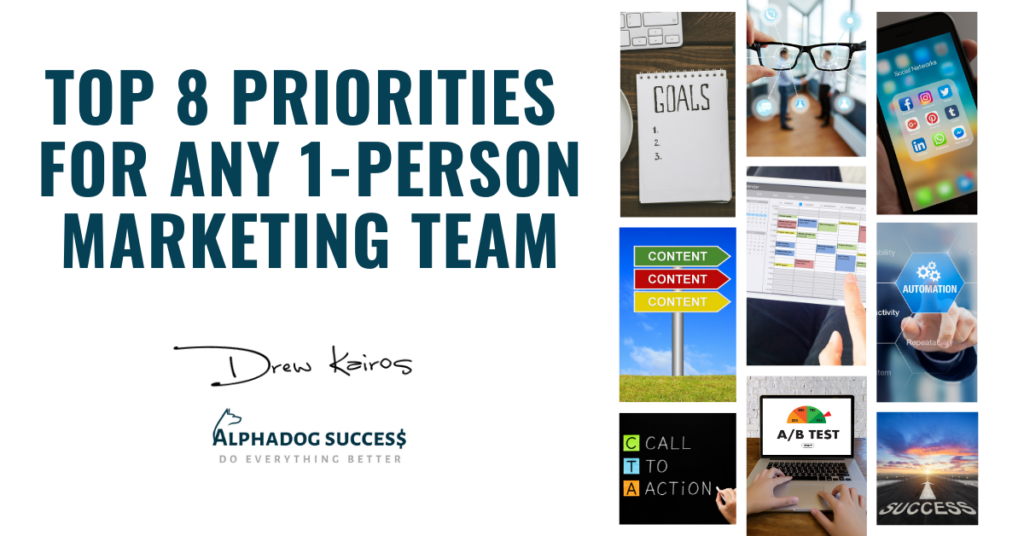How Your Ideal Client Saves Your Time And Money
Why is an Ideal Client important? One of the most fundamental aspects of your marketing, product development and business plan is knowing who your ideal client is. Without this knowledge, you won’t know how to write your content in a way that’s attractive to your clients, and you won’t be able to tailor your products or services to their unique needs. When I talk about content I mean everything that you develop for your clients or potential clients to draw them to you and help you solve the problems that they face in their everyday lives, so everything hinges on this. When you know who your ideal clients are, your client attraction efforts will become vastly more effective, because you’ll be able to pinpoint what they want, what challenges they have, where they’re looking for information about your industry, and what trends and mindsets influence the way they search for products and choose who to buy from. In this blog post, I’ll bust some myths about having ideal clients that cost businesses thousands of dollars each year, and I’ll tell you the nine things you need to know about your ideal client, as well as how to choose your ideal client if you aren’t sure who they are. Why some businesses avoid having ideal clients: One of the costliest myths that businesses fall for is the idea that they don’t need an ideal client. Some of their reasons seem sound, but they’re based on misconceptions about what clients want and how client attraction works. Here are two of the reasons why people fall into that trap: Reason 1: They’re afraid of driving clients away. If you could potentially target a wide range of different demographics, why would you want to alienate some of them by narrowing your niche? That’s a fear that many business owners have when they first start to consider identifying an ideal client. They believe that the wider the net they cast, the more clients they’ll draw in. Reason 2: Their product could be used by anyone. Some businesses could, in theory, serve almost any client under the sun. Life coaches who teach universal success principles that apply to anyone, chiropractors who could work on anyone who has a spine, and businesses that sell food are all examples of people with a very broad potential audience. If you’re in such an industry, why would you want to narrow your client base? Why not having an ideal client WILL cost you: If you share these concerns about having an ideal client, here are four truths about client attraction that should put your mind at ease: What’s attractive to one client won’t be attractive to others. People are the most inclined to make a purchase when your marketing speaks to their exact challenges and needs. When someone looks at your offer, they should think “Yes – that’s EXACTLY what I need! It’s like that product was made for me!” If you try to create and sell offerings that are meant to apply to everyone, there’s a good chance that they’ll be partly applicable to everyone, but ideal for no one. Your clients will look at your offer and think, “Some of that looks good, but a lot of it just doesn’t apply to me”. If someone is motivated enough that they’re actively looking to buy, the chances are good that they’re looking for something in specific. An offer that’s only a partial match, or that seems to be designed with a different demographic in mind, will be rejected. One excellent example I’ve heard a few times is that of a pharmacy. If you try to sell an “everything pill”, will anybody trust it enough to buy it? Probably not – and even if they did, there’s a good chance that they wouldn’t think to look for it. If you have a headache, the chances are good that you’re looking for a pill designed to treat headaches. Unless you were already aware of the “everything pill” before your search began, it probably won’t even occur to you to look for it. You could walk right past it and not even register it. When you know exactly who your clients are, what they need, and what they struggle with, you’ll be able to create products and marketing materials that are exactly what they’re looking for, and you can learn their language and phrase your marketing in ways that appeal strongly to them. You don’t want to waste your time and budget on people who are less inclined to buy. Your ideal clients aren’t the ONLY people who will buy from you, but they are the people who are the most likely to make a purchase. If you were fishing, would you cast your line or drop your net repeatedly in random parts of the lake, or would you specifically target the areas where you knew you’d catch the most fish? Would you use bait or a lure that’s good for all kinds of fish, or the ones that will attract the specific type of fish you’re looking to catch? The same principle applies to marketing. You’ll never have the time and budget to reach ALL the possible demographics at once, so you should spend that time and money on the demographic that needs and wants your product the most, and that’s the most likely to make a purchase. You don’t WANT to attract every type of client. Not every client is a good one, especially if you’re selling services as opposed to products. If you’re going to have to spend any amount of time working with a client, you don’t want to attract the kind of people who are lukewarm about your services, and who will drag their feet, complain, nitpick, make unreasonable demands, hamper your efforts, and prove impossible to please. You also don’t want to attract people who aren’t able to get the full benefit from your offering. If something outside of your control will prevent you from getting
How Your Ideal Client Saves Your Time And Money Read More »




